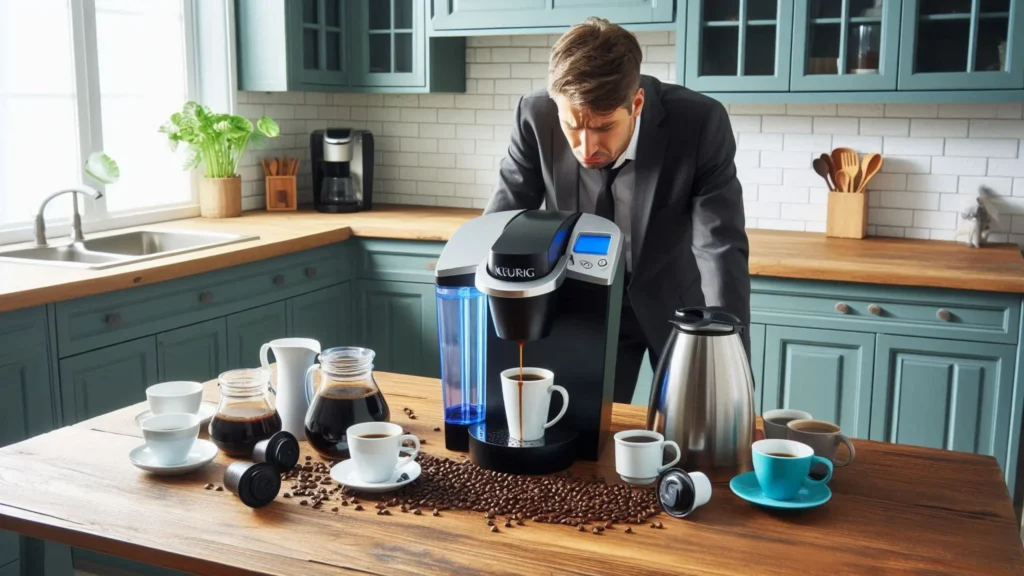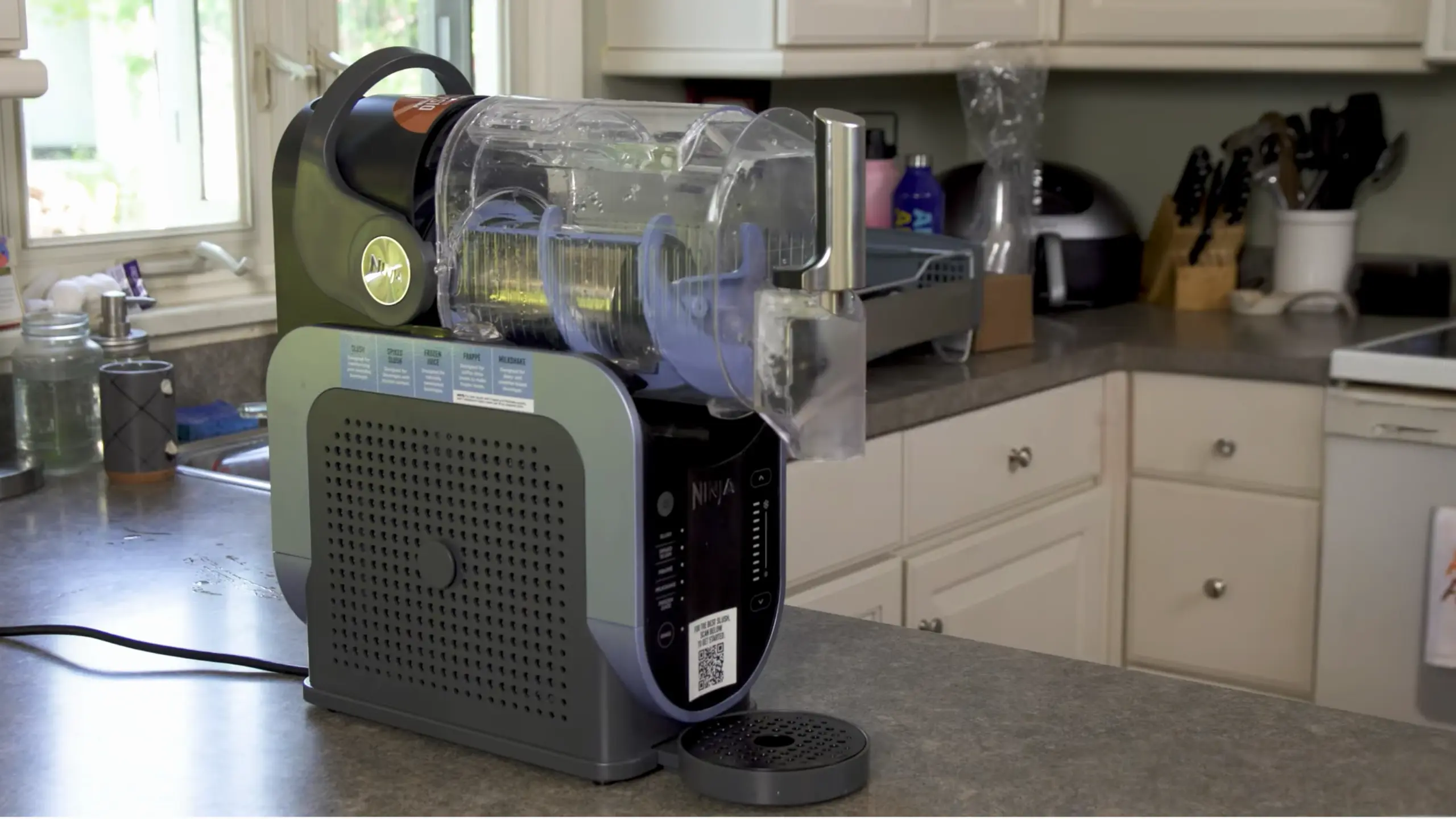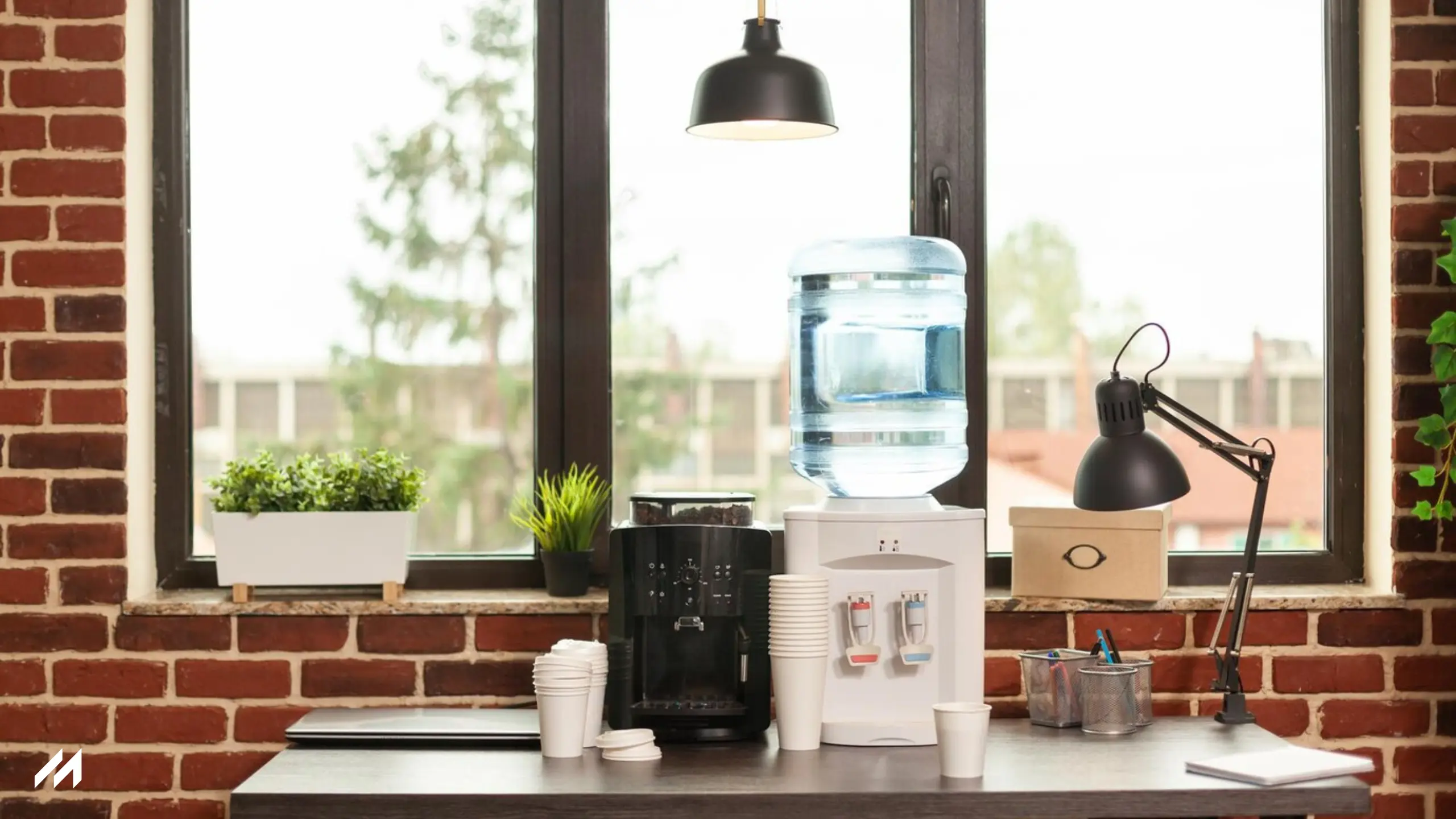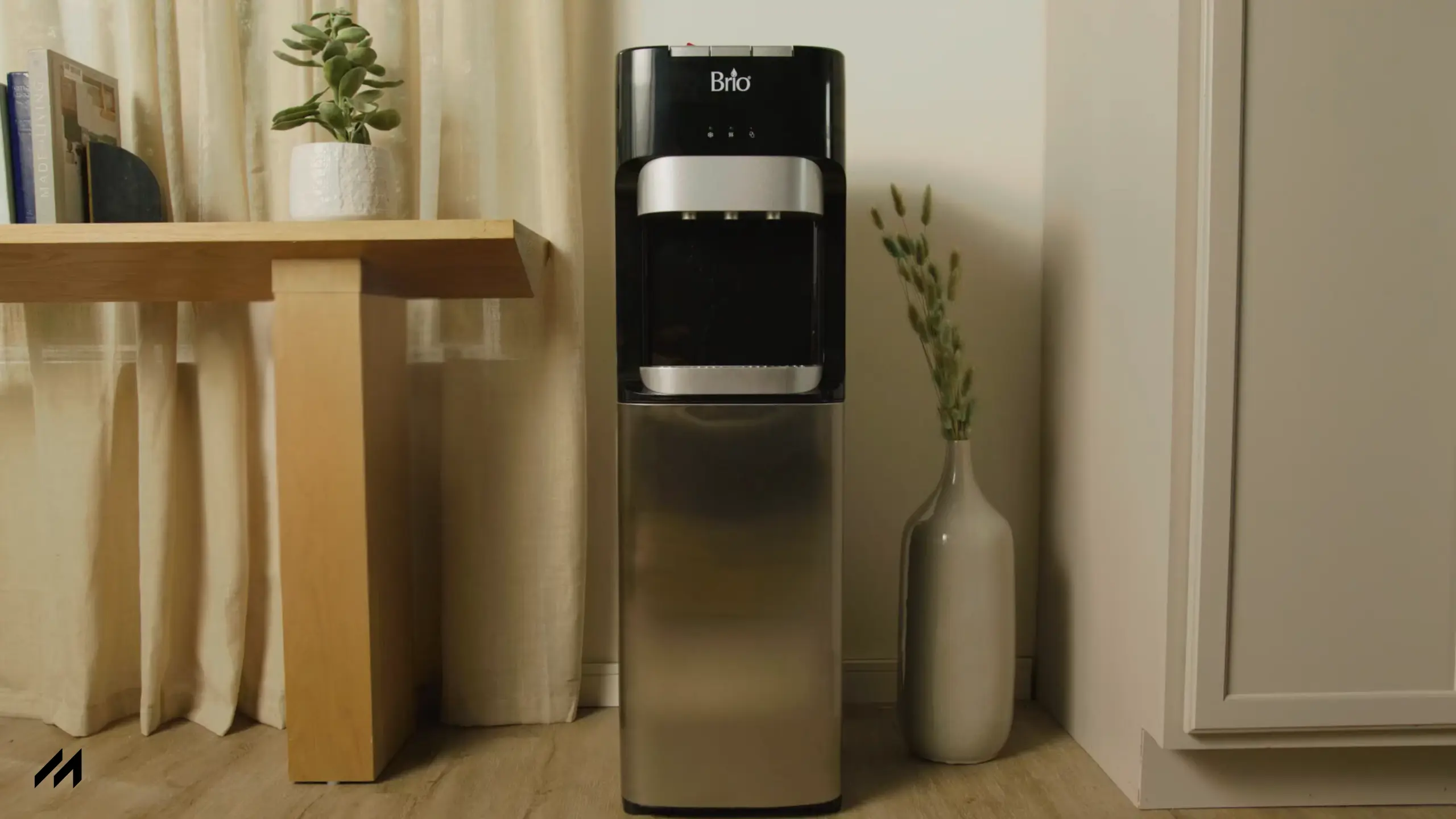Keurig coffee makers offer convenience, but being an appliance means it can and will malfunction, which is one reason knowing what to do about a malfunction will get your coffee up and running. Minor problems with a bigger ones: knowing some of the likely Keurig malfunctions will prepare you to spring into action so you can restore your coffee machine to its brewing self.

Understanding Keurig Coffee Maker Common Issues
Keurig coffee maker are exposed to a couple of common problems that interrupt your brewing experience. Identifying these problems will make you diagnose and solve them more quickly.
Keurig Coffee Maker Not Turning On?
When the Keurig coffee maker doesn’t turn on, several potential issues might be causing it:
Power Supply and Basic Electrical Issues:
Troubleshooting Steps:
- Power Button Techniques
- Press and hold the power button for 10 seconds
- Unplug the machine for at least 30 seconds before restarting
- Water Reservoir Alignment
- Ensure the water reservoir is correctly positioned
- Improperly seated reservoirs can prevent the machine from functioning
Advanced Diagnostics:
If basic troubleshooting fails, contact Keurig customer service at 866-901-BREW for professional assistance
Keurig Coffee Maker Not Brewing Coffee?
Water Supply and Reservoir Issues:
Common Water-Related Problems
Potential Technical Obstacles:
Recommended Maintenance:
Troubleshooting Specific Scenarios
Keurig Coffee Maker Won’t Turn On After Descaling
It is really frustrating when your Keurig won’t turn on after descaling. Even though descaling is an essential maintenance process, it sometimes results in electrical problems that prevent the machine from operating normally.
Other popular causes why a Keurig will not power on after descaling include tripped thermal switches, improper descaling, and problems with electricity. The ratifiers of those problems are normally mineral deposits, cleaning gone awry, or leftover descaling solution damaging the machine’s components.
Troubleshooting: First, reset the unit by disconnecting it, removing the water reservoir, and connecting after 30 minutes. Try turning the unit on again and make sure that the water reservoir is installed correctly. If that does not work, try doing a manual reset on the thermal switch or a few water-only brewing cycles to try to clear any residual descaling solution.
Keurig Coffee Maker Saying “Prime”?
A “Prime” message on a Keurig indicates that there is a water flow problem—usually due to mineral deposits, a misaligned water reservoir, or blockage of the intake and exit needles. Repair it: Remove and reattach the water reservoir and give it a good soapy cleaning, checking its filter screen, then run some water-only brew cycles. If this message remains, clean the K-cup holder, funnel, and inside needles. Proper care and maintenance, such as using filtered water and descaling once a month, may prevent this issue.
Keurig Not Dispensing Water?
If your Keurig k-cup coffee maker is not dispensing water, generally means it is clogged with air bubbles, clogged water line, or mineral build-ups. Make sure the water reservoir is seated well and cleaned. Give the machine a gentle shake to get air bubbles out, and use a paper clip to clear clogged needles. Descale every 3-6 months, using water only cycles, to prevent this from happening in the future.
Heating and Brewing Issues
How Do I Fix a Keurig That Won’t Heat Water
If your Keurig is not heating water, then the problem may be mineral deposit build-up, a problematic heating element, or internal damage. First, try resetting the machine: unplug it for 30 minutes. After that, plug it back in. Clean it to remove calcium buildup and use filtered water to prevent future issues. Check the water reservoir, reset the system, and look at the water pump. If the problem continues, check the thermostat and heating elements.
Keurig Coffee Maker Brewing Slowly
The primary causes of slow brewing in a Keurig include mineral buildups, pathways of water clogged, or simply clogged needles. To fix this, you need to clean the machine real well, take a paperclip and clear out the needles, and perform water-only brew cycles to get rid of the debris. Descale every 3-6 months with vinegar and use filtered water to reduce mineral buildup. A correctly functioning Keurig should brew in approximately 60 seconds.
Keurig Coffee Maker Leaking Water
The leaks in Keurig coffee makers usually come from some sort of problem with the seals of the water reservoir, clogged water lines, or malfunctioning parts. Check for cracks in the reservoir, position correctly, and check the water level. Also, check O-rings, apply food-grade silicone grease, and descale it regularly. Cleaning of water lines, valve, and boiler seals will help avoid leaks.
Keurig Noise and Error Codes
A Keurig making noise but not brewing most probably is caused by blocked needles, mineral deposit, or internal problem. Clean the K-cup needles with a paperclip, descale with vinegar or an acid solution to prevent calcium buildup, and assess for pump or pressure issues. Rest the machine, verify the water reservoir alignment, and investigate internal part for defects.
Keurig K-Cup Compatibility Issues
Keurig Not Fit the K-Cup Properly
Check the individual specifications of the model if K-Cups are not compatible with your Keurig. Solutions can range from the removal of grey rings, adjustment of the brew basket height, to merely repositioning the K-cup. Do not push the K-Cup; otherwise, it will be damaged since different models have different fitting specifications. Make sure the K-Cup is seated properly in the brew basket and aligned with the brewing needle. Frequent cleaning of the machine as well can prevent fitting.
Fix a Clogged Keurig Needle
For repairing a clogged Keurig needle, straighten a paper clip and clean the entry and exit needles removing coffee grounds. Unplug the machine first, and carefully clean the needle holes. Run water-only brew cycles to flush out remaining debris. To achieve best results, please use Keurig maintenance supplies or rinse pods. Regular needle cleaning and quarterly descaling help prevent clogs. Do not leave K-Cups in the machine all night and clean after each cup has brewed.
Resetting Your Keurig Coffee Maker
To reset a Keurig, cut the power off for 10-60 minutes, then plug in all the parts. Simple models require power cycling, while the sophisticated ones require digital resets. Drain the water reservoir and remove any air bubbles; then ensure the setup. Clean the needles regularly, descale every 3-6 months, and use filtered water to avoid any type of issue

Hello, I am Yeasin Sorker, a blog writer and a kitchen appliance expert. I’m a kitchen industry veteran and provide insight, installation advice, and unbiased reviews. I love helping consumers know what to expect from appliances, their benefits and their drawbacks, and have the best experience with them. My information is based on the data.



Leave a Reply